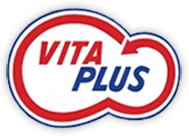
Preparing for corn silage harvest

Ideal spring planting, combined with plenty of heat and moisture, means corn silage harvest is quickly approaching. With a great-looking crop and lower corn prices, this harvest may present the opportunity to build corn silage inventory. Of course, that’s not the case for everyone, as some areas across the Midwest have a less-than-ideal crop due to too much moisture and/or storm damage. A few strategies can help you determine when to hit the fields and how to put up the highest-quality forage possible.
Know your prime time to harvest
Temperature affects crop growth and development. Accumulation of heat during the growing season can be used as a predictor of plant developmental progress. Growing degree days is a calculation to express this heat accumulation. The GDD equation utilizes maximum and minimum daily air temperature to determine the average daily temperature and subtracts a base temperature of 50 degrees. Upper and lower limits of 50-86 degrees are used because corn growth rate is near zero at 50 degrees, and growth rates do not increase above 86 degrees. Research suggests that most hybrids with relative maturity under 100 require about 750 GDD from silking to silage harvest; most hybrids with relative maturity between 101-115 require about 800 GDD from silking to silage harvest. This season, southern Minnesota is running about 200 GDD ahead of last summer.
Note tasseling dates of fields. Silage harvest usually begins 42-47 days after tasseling; however, this is dependent on several factors, such as rainfall, temperature, corn hybrid and fertility. As harvest nears, monitor whole-plant moisture for a more accurate harvest date. Collect some representative stalks (manually or mechanically) and dry them to obtain a whole-plant dry matter. The rate of dry down is typically one-half to 1 percentage point per day.
Identifying and achieving harvest goals has huge production and performance implications, along with economic impacts on your dairy. Corn silage must be ensiled at optimum DM to maximize packing density and fermentation. For bunkers and piles, the optimal DM range is 32%-35%. Bags are similar but may tolerate corn silage put up a couple of points drier.
Dial in your harvest equipment
Kernel processing is critical, especially as DM and milk line progress. Preharvest is a good time to check the processing roll condition and gap setting. Roll gap clearances are generally measured in millimeters with a normal opening of 1-4 mm. This setting is dependent on kernel maturity, hardness and size. Ideal settings for the current crop may differ significantly from previous crops.
Once the chopper is rolling, evaluate kernel processing and adjust accordingly. The first method is to fill a 32-ounce cup with corn silage before ensiling. Spread it on a flat surface. You should see no whole or undamaged kernels. The second option is to use a bucket of water. Place a couple of handfuls of corn silage in the bucket, skim off the floating plant material, pour off the water, and evaluate the corn particles that remain in the bucket. Lab tests to determine corn silage kernel processing score can be valuable retrospectively, but the lag time to deliver and receive results reinforces the need for field-side evaluation.
Theoretical length of cut determinations for corn silage are dependent on factors such as harvest DM, percentage of ration contribution and storage structure. Typical TLOC ranges from 5/8-1 inch (16-25 mm.). As DM increases, considerations need to be made to shorten the TLOC.
Packing densities less than 15 pounds of DM per cubic foot are subject to a DM loss of greater than 15%. Know your packing tractor’s weight and fill rate to help you achieve adequate density. Quickly cover bunkers or piles with an oxygen barrier plastic to prevent spoilage.
Finally, and most importantly, be safe. Corn silage harvest brings an increase in machinery traffic and long hours. Make safety your top goal this corn silage season.
This article was originally published in the August 23, 2025, issue of Dairy Star. Click here for the original article.
| Category: |
Dairy Performance Forage harvesting |

